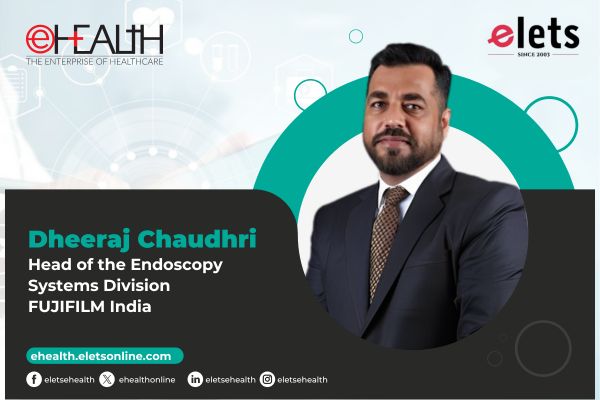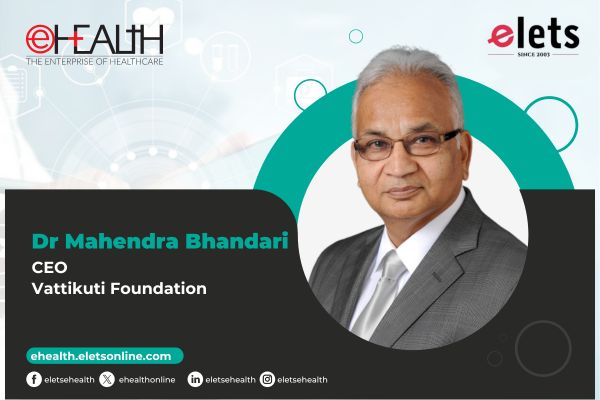
National e-Health Authority (NeHA) will have a basic aim to guide the adoption of e-Health solutions at various levels and areas in the country, shares Jitendra Arora, Director(eHealth), Ministry of Health and Family Welfare with Elets News Network (ENN)
What is role of technology in Health sector?

Technology can play an important role in overcoming the various challenges faced in Indian health care system, inimproving the efficiency of the healthcare system and also in improving the quality and expanding reach of healthcare services, especially in the context of serving a billion plus population of India.Large scale and sustainable implementation of ICT interventions in healthcare services i.e. eHealth has a significant potential in addressing such challenges.Ministry is making use of ICT to obtain reliable health information and near real-time data for policy making,and ensuring efficient healthcare program& service delivery by rolling out a number of IT systems and applications.

Why is NeHA or a similar body essential?

Every country during the adoption of national eHealth strategy has focused on developing an authority or agency that would take care of key regulatory and promotional issues. It is necessary to maintain the privacy and confidentiality of the patient health records.The National Knowledge Commission (NKC) in 2009 had recommended for establishment of a National Health Information Authority(NHIA), to maintain the flow of information between various health care establishments and provide guidelines in the context of maintenance &use of EHR. Formation of NeHA has been envisaged for regulation, promotion and adoption of eHealth standards and nodal role in eHealth strategies for the country.

What would be the major responsibilities of NeHA?
Roles of the authourity will be in areas of policy & promotion; standards development; legal aspects including regulation (privacy & security of health data), health exchange and capacity building etc. The authority would also guide adoption of eHealth solutions and facilitate its implementation by integrating and harmonising the standards. It will also act as an enforcement agency with suitable mandate and powersand also deal with privacy and security aspects of health data and records.
 How would NeHA be set-up and what is the time frame required?
How would NeHA be set-up and what is the time frame required?
The organisation proposed to be created through legislation (Act of parliament).The setting up of the authority will require approval of Cabinet and would require a year for set up.
What is the current status of the process for setting up of the authority?
Concept note on setting up of NeHA has been put in public domain for inviting comments and suggestions from various stakeholders. The concept note will be in public domain fora month and thereafter the suggestions received will be duly uated for incorporation.It is available on Ministry of Health and Family Welfare(MoHFW) website as well as on MyGov portal. The response obtained so far on the concept note has been quite supportive of the Ministrys initiative and remarks this as being a critical step in the direction of further strengthening and ensuring standardisation (thus facilitating inter-operability) of the Health IT system in the Country.
What is the Indian Governments focus on using ICT in Health?
Twelfth Plan document of Government of India recognises health information system as an important pillar of health care system. In the past, National knowledge Commission (NKC)had recommended extensive use ofIT in health care to promote the delivery of efficient health care. It had also recommended to create a nation wide electronic health record (EHR) system.More recently, the Digital India Programme announced covers in its ambit the use of ICT in healthcare for services namely online consultation,online medicine supply, online medical record and pan India exchange of online medical record.
|
||||||||||||||||||||||||||||
Why is MoHFW implementing electronic medical record (EMR)/electronic health record (EHR) standards?
The large corporate hospitals and some public sector hospitals have started maintaining EHR of their patients.However, these healthcare systems are highly complex, fragmented and use multiple information technology systems. And, these records are not standardised and when a patient moves from one hospital to another,his electronic health record does not get exchanged. Ministry has decided to implement the EHR for seamless information flow and smooth movement of health records of beneficiaries across the hospitals. The EHR standards after wide consultation with domain experts and with the stake holders were notified by the Government in September 2013.
The response obtained so far on the concept note has been quite supportive of the Ministrys initiative
What are the advantages of using HR standards?
EHR will ensure rationalisation of treatment and avoidance of duplication of investigations. It will also aid improved clinicians decision-making by providing access to patient health record information when they need it.EHR streamlines the clinicians workflow, cuts delays,plugs gaps in care and helps in reducing medical errors.
What is the status of the present EMR and EHR systems in India?
Currently in India, there are only a few health service providers, both from both public and private sectors,who have EMR / EHR for patients. But these systems mostly are not as per the standards notified by the government and are not inter-operable.
Be a part of Elets Collaborative Initiatives. Join Us for Upcoming Events and explore business opportunities. Like us on Facebook , connect with us on LinkedIn and follow us on Twitter , Instagram.
"Exciting news! Elets technomedia is now on WhatsApp Channels Subscribe today by clicking the link and stay updated with the latest insights!" Click here!
















